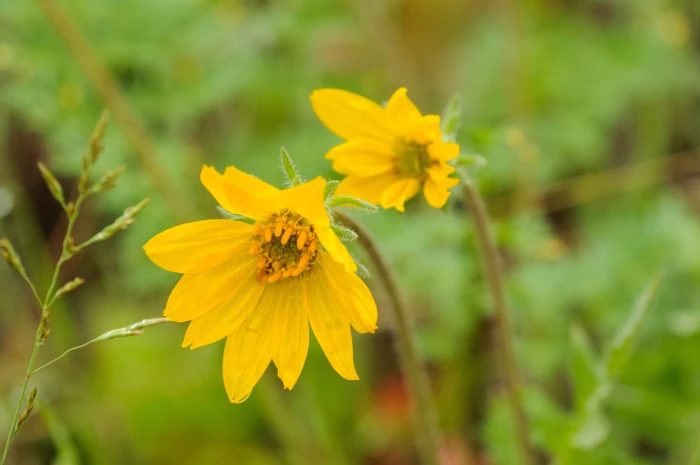Hooker’s Balsamroot
(Balsamorhiza hookeri)
Hooker’s Balsamroot (Balsamorhiza hookeri)
/
/

Rolf Lawrenz
CC BY 4.0
Image By:
Rolf Lawrenz
Recorded By:
Copyright:
CC BY 4.0
Copyright Notice:
Photo by: Rolf Lawrenz | License Type: CC BY 4.0 | License URL: http://creativecommons.org/licenses/by/4.0/ | Rights Holder: Rolf Lawrenz | Publisher: iNaturalist | Date Created: 2018-05-12T08:48:01-07:00 |





































Estimated Native Range
Climate Requirements for West Allis, Wisconsin
| This Plant | Your Site | Plant Suitability for Your Location | ||
|---|---|---|---|---|
| • Precipitation | 7" - 59" | 33" | Your precipitation may be too high for this plant. | Too high |
| • High Temp. | 55°F - 102°F | 82°F | Your summer temperatures are normal for this plant. | Excellent |
| • Low Temp. | 1°F - 39°F | 11°F | Your winter temperatures are normal for this plant | Excellent |
This plant may not grow well at your location - your precipitation is too high.
Summary
Balsamorhiza hookeri, commonly known as Hooker’s Balsamroot, is a deciduous perennial herb that is native to dry open forests, grasslands, and sagebrush steppe ecosystems in the Intermountain West of the United States. It typically grows to a height of 12 to 30 inches (30 to 76 cm) with a similar spread. The basal leaves are large, hairy, and can be up to 16 inches (41 cm) long, forming a rosette at the base of the plant. The plant produces one to several erect, leafless, and hairy stems, each topped by a single, showy flower head from April to July. The flower heads are sunflower-like, 1 to 3 inches (2.5 to 7.6 cm) wide, with 10–21 fringe-tipped yellow ray flowers surrounding a center of numerous disc flowers.
Hooker’s Balsamroot is valued for its striking yellow flowers that resemble sunflowers, which add a bright splash of color to native plant gardens, xeriscapes, and restoration projects. It is drought-tolerant once established, making it suitable for low-water landscapes. This species is also important for pollinators, providing nectar and pollen for bees and butterflies. In cultivation, it thrives in full sun and is adaptable to a range of soil types, including those with poor fertility, but it prefers well-drained soils. While it is generally low-maintenance, it does not transplant well due to its deep taproot, so it is best sown directly where it is to grow.CC BY-SA 4.0
Hooker’s Balsamroot is valued for its striking yellow flowers that resemble sunflowers, which add a bright splash of color to native plant gardens, xeriscapes, and restoration projects. It is drought-tolerant once established, making it suitable for low-water landscapes. This species is also important for pollinators, providing nectar and pollen for bees and butterflies. In cultivation, it thrives in full sun and is adaptable to a range of soil types, including those with poor fertility, but it prefers well-drained soils. While it is generally low-maintenance, it does not transplant well due to its deep taproot, so it is best sown directly where it is to grow.CC BY-SA 4.0
Plant Description
- Plant Type: Herb
- Height: 0.5-2.6 feet
- Width: 0.096-0.5 feet
- Growth Rate: Moderate
- Flower Color: Yellow
- Flowering Season: Spring
- Leaf Retention: Deciduous
Growth Requirements
- Sun: Full Sun
- Water: Medium
- Drainage: Fast, Medium, Slow
Common Uses
Bee Garden, Edible*Disclaimer: Easyscape's listed plant edibility is for informational use. Always verify the safety and proper identification of any plant before consumption., Low Maintenance, Showy Flowers
Natural Habitat
Dry open forests, grasslands, and sagebrush steppe ecosystems in the Intermountain West of the United States
Other Names
Common Names:
Scientific Names: Balsamorhiza hookeri , Balsamorhiza balsamorhiza , Balsamorhiza hirsuta var. hirsuta , Heliopsis balsamorhiza
GBIF Accepted Name: Balsamorhiza hookeri (Hook.) Nutt.